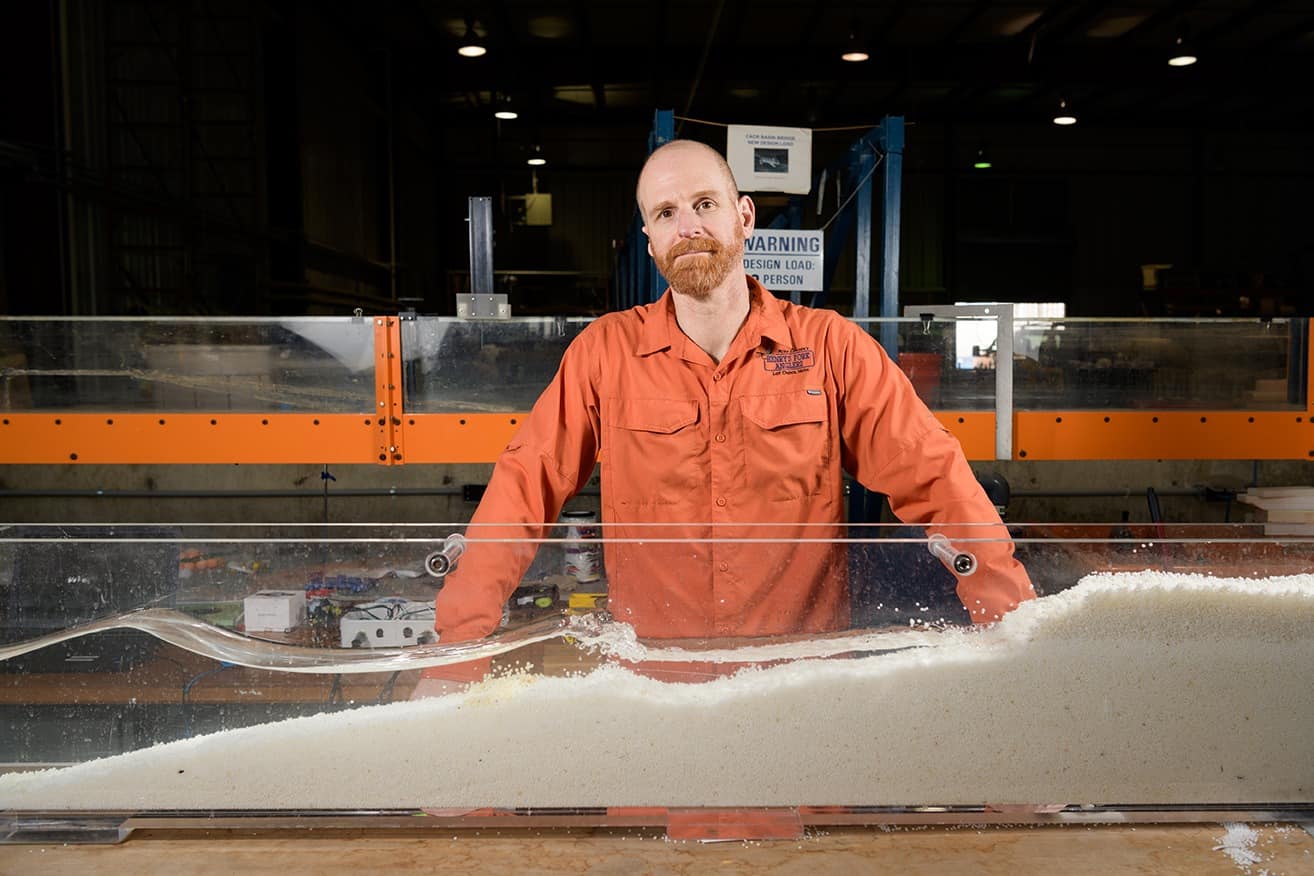 Research & Discovery
Research & Discovery
A Blog Devoted to UD Innovation, Excellence and Scholarship
Research & Discovery
A Blog Devoted to UD Innovation, Excellence and Scholarship
Making waves
ABOVE: Professor Jack Puleo worked with undergraduate students to construct wave flumes in the Coastal Engineering Laboratory. | Photo by Evan Krape
With demand for coastal engineers rising, UD professor brings the coast to classrooms
These problems are so important that Puleo, the director of UD’s Center for Applied Coastal Research, wants to inspire the next generation of coastal experts.
“My goal is to get more people excited about coastal research,” said Puleo. “There is a big demand for coastal engineers.”
To meet this demand, Puleo wants to help high school students understand coastal processes, which are not commonly included in high school curricula. With support from the Office of Naval Research, Puleo is building wave flumes, devices that model the behavior of waves and resulting effect on beaches, and delivering them to 12 high schools along the East Coast, including Delaware, Pennsylvania, New Jersey, Maryland, Virginia, North Carolina and Florida.
Puleo uses these wave flumes to demonstrate how different ocean waves affect the shoreline. He starts with small waves to show how the sand of the beach builds up over time. Then he shows how the beach quickly erodes when the waves intensify.





